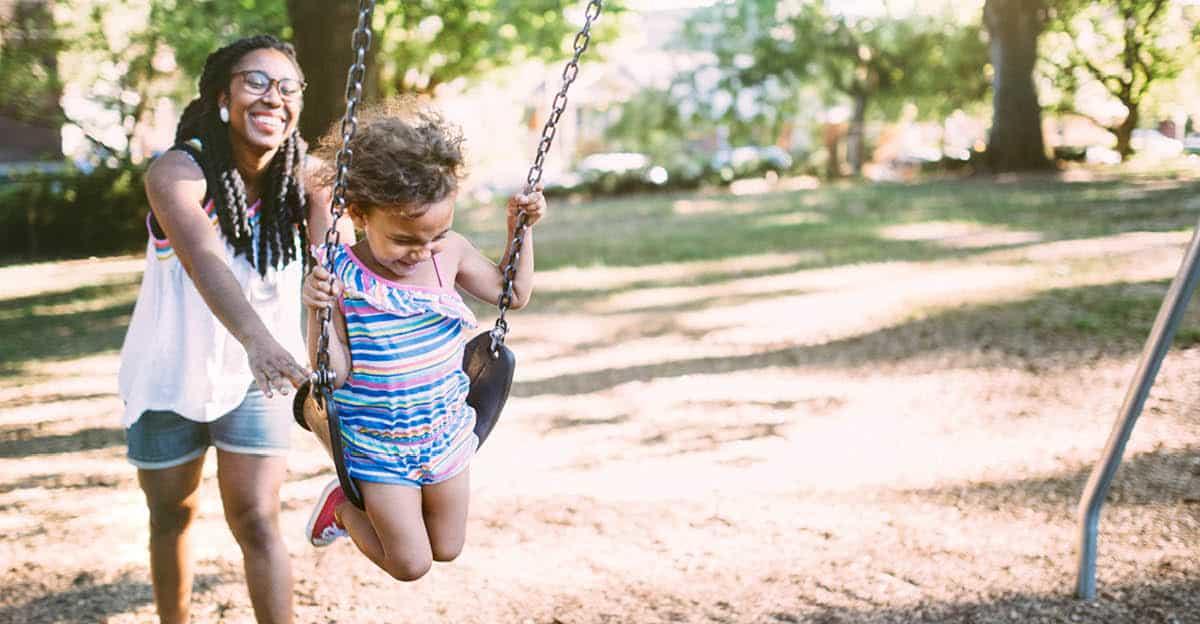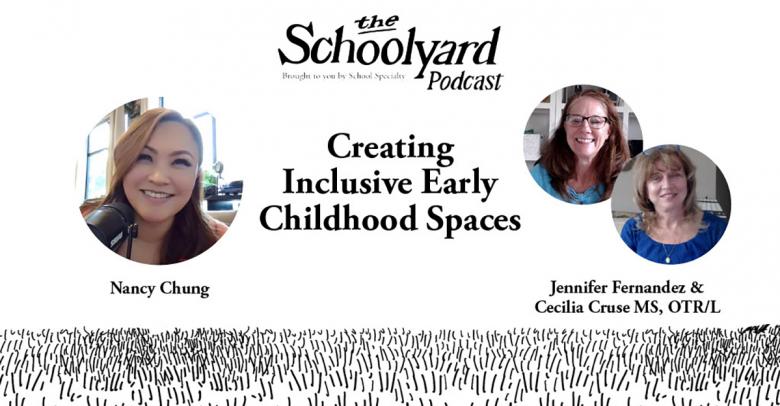Accurately processing vestibular information is key to properly using vision, preparing posture, maintaining balance, planning actions, moving, calming down and regulating behavior. Occupational and Physical Therapists trained in ASI (Ayres Sensory Integration) know that swinging can help tap into the power of the vestibular system in the inner ear.
Occupational Therapists and Physical Therapists have long used swings as part of their treatment protocols for children with SPD (Sensory Processing Disorder) ASD (Autism Spectrum Disorder), ADHD (Attention Deficit Hyperactivity Disorder) and overall Developmental Delay.
Yet outside of a clinical therapy practice, swings as part of active childhood play seem to be disappearing due to an increase in playground safety issues, reduced or absent recess time, and increased interest in technology/gaming activities.
5 Factors to Consider When Choosing a Swing
Savvy educators, therapists and parents are finding creative ways and places to reintroduce the benefits of swings. Here are 5 factors to consider when choosing a swing:
1. Linear Movement
It may depend on each child’s sensory system, but in general, linear (back and forth) rocking is usually calming while circular (rotational) movement can be more stimulating. For classrooms, quiet or study spaces, a gentle swing with limited movement like the Egg Chair is a good choice.
2. Dynamic Movement
Some children may be under responsive to vestibular input or need additional practice with posture and balance. These kids may benefit from a swing that allows for more dynamic movement like the Frog Swing or Moon Swing along with a structured protocol for use.
3. Deep Touch Pressure
Many children need extra deep touch pressure input to help the proprioceptive system (muscle and joint receptors) function properly. This extra deep touch may help with spatial boundary definition and body awareness. The Joki Swing or the Cocoon Swing might be the right option for calming and self-regulation.
4. Flat Base Options for Added Flexibility
For motor-based activities that work on eye hand coordination, crossing the midline or bilateral motor skills a flat base swing allows the child to sit, tall kneel, stand or tummy lie while doing motor planning tasks such as tossing bean bags into a bucket. The Platform Swing or the Soft Ride Glider are versatile and durable for this role.
5. Safe Installation
Be sure you have the proper hardware and installation instructions for all ceiling mounted or stand along swing frames. Swing hardware and frames should be inspected regularly for signs of wear. Adult supervision is recommended for all swing activities.
More Sensory-Based Intervention Help & Ideas
If you’re looking for more advice and ideas to engage and encourage students with special needs, be sure to visit the Special Needs topic page and see what’s new. Then, take a moment to head over to the online store to find hundreds of specialized solutions and tools to improve the learning experience for students with special needs.
Read More: Sensory Based Interventions for Vestibular Input
Cecilia Cruse
Cecilia Cruse, MS, OTR/L has a BS degree in Occupational Therapy from the University of Florida, and her Master’s degree in Education from Georgia State University. She is SIPT certified and has over 25 years’ experience in pediatrics with school-based services, acute care, and outpatient pediatric settings.
Read more posts by Cecilia Cruse–>







Leave a Reply